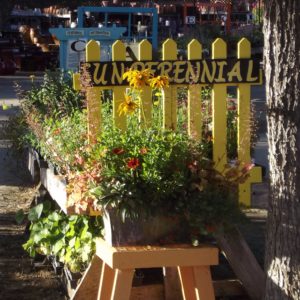 Plants planted in the heat of summer are more prone to pitfalls than any other time of the year but you can avoid some common problems and keep your plants healthy and happy despite our Valley heat and the drought by using the checklist below:
Plants planted in the heat of summer are more prone to pitfalls than any other time of the year but you can avoid some common problems and keep your plants healthy and happy despite our Valley heat and the drought by using the checklist below:
Water in the pot before planting
Setting a nursery pot into a tub of water until the bubbles stop is the surest way to know your plant is completely watered before setting it into the pre-moistened planting hole.
Plant Soon
Plant your new plant as soon as is practical (better to postpone planting a few days if the weather is extremely hot.) If you can’t plant it right away, keep your new plants in a shady location and keep their roots moist.
Monitor Frequently
Check in on your new plants frequently. Water deeply and check every day. Taking the time daily to look at the plants and feel the root ball for moisture will provide clues that will help your new plants survive a heat spell.
Mulch
Adding mulch around the plants will conserve up to 30% water. Don’t pile the mulch against the plant, but surround the plant and extend out from the plant 18-36″
Wait Until After Vacation
Postpone your whole planting project if you are scheduled for a vacation during the hot months. Better to purchase new plants after your return than see them burn up by a sudden rise in temperatures while you are away.
Proper Planting Depth
When planting any new plants avoid the temptation to bury it deeper than it was growing in the nursery container. Except in the case of tomatoes, virtually every plant will die within a year if new soil is placed on top of the original root ball. See our online planting instructions for an illustration.
Water by Hand
Don’t rely on an automatic drip or spray system to keep plants at their best their first few weeks. Hand watering is more targeted, saves water and allows you to monitor plants closely
Evaluate Drip System
Make sure you evaluate how your drip system is working, make repairs. Drip systems can make it difficult to detect a problem until it’s too late. Turn the system on and look at every emitter to be sure its functioning and look for leaks.
Add More Drip Emitters
Add drip emitters to supply your plant’s growing root system. A typical shrub will need water all around it to thrive. A tree by all means will require several drip emitters. (One drip emitter on an older tree will almost certainly result in a small root system that will not support the tree in a vertical position long term).
Don’t Fertilize a Thirsty Plant
For new or established landscapes, avoid fertilizing a thirsty plant. Typical fertilizers, even blood meal can burn on a hot day. Thoroughly water one day and fertilize the next day using a mild fertilizer such as EB Stone Organics or Maxsea water soluble.
Call us with Questions
Of course, this checklist is generalized and brief, but as summer weather hits, please call or come in with any specific questions or concerns you have about yellowing leaves, wilty symptoms or whatever. Often we can reverse a decline with some evaluation and advice. Think of us as partners. We are interested in your success. (925) 447-0280.
